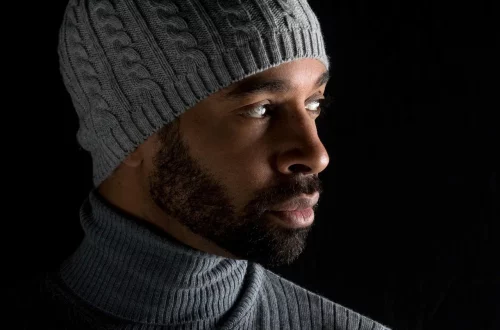Iconic Bald Characters in Pop Culture: A Celebration of Hairless Heroes
The world of pop culture is a vibrant tapestry woven from countless narratives and characters that resonate with audiences across generations. Among these characters, a unique subset stands out: the bald heroes and anti-heroes who have captured our imaginations and hearts. Their hairless heads symbolize not just a physical trait but often represent deeper themes of strength, resilience, and individuality. These iconic bald figures have transcended mere appearances to become cultural touchstones, embodying ideals that inspire and provoke thought.
From comic books to blockbuster movies, bald characters have emerged as powerful symbols of defiance and unconventional beauty. They challenge societal norms and conventions surrounding aesthetics, proving that one doesn’t need a full head of hair to be a hero or a villain. This celebration of baldness extends beyond physical attributes; it encompasses the stories, struggles, and triumphs of these characters, inviting audiences to reflect on their own perceptions of identity and strength. As we dive deeper into this intriguing phenomenon, we’ll explore the various bald characters who have left an indelible mark on pop culture and examine the significance of their hairlessness in crafting their identities.
Bold Moves: The Symbolism of Baldness
Baldness in pop culture often signifies more than just a lack of hair; it can represent a character’s journey, their struggles, and their ultimate triumphs. Many bald characters embody themes of resilience, bravery, and the quest for authenticity. For instance, characters like Professor X from the “X-Men” series not only display physical strength but also intellectual prowess and moral fortitude. In this context, baldness can symbolize wisdom and experience, further enhancing the character’s depth.
Moreover, bald characters frequently challenge societal beauty standards. In a world often obsessed with youth and aesthetics, these characters remind us that true power lies within. Take the iconic character of V from “V for Vendetta,” who, while not completely bald, sports a hairless visage under his mask. His lack of hair becomes a powerful symbol of his rebellion against oppression and the fight for freedom. This portrayal resonates deeply in a society where conformity is often celebrated, encouraging audiences to embrace their own uniqueness.
Additionally, the bald head can serve as a canvas for storytelling. Characters like Lex Luthor from the “Superman” franchise utilize their baldness to reinforce their villainous personas. The starkness of a bald head often evokes a sense of intimidation, reflecting the character’s ruthless ambition and cunning nature. This duality of baldness—representing both heroism and villainy—highlights its complexity in narrative arcs and character development.
Ultimately, the symbolism of baldness in pop culture goes beyond simple aesthetics. It invites audiences to unpack their preconceived notions of beauty and strength, encouraging a broader conversation about identity and acceptance. Through these characters, we learn that it is not the hair on one’s head that defines them but the actions they take and the values they uphold.
Iconic Bald Characters in Film
The realm of cinema has birthed numerous bald characters who have etched themselves into the annals of pop culture history. One of the most recognizable figures is Bruce Willis’s character, John McClane, from the “Die Hard” series. McClane’s baldness is emblematic of his rugged, no-nonsense persona. His character embodies the everyman hero, someone who, despite lacking traditional heroic attributes, rises to the occasion to protect those in peril. This iconic role has left a lasting impression, solidifying McClane as a quintessential action hero.
Another notable character is Mace Windu from the “Star Wars” saga, portrayed by Samuel L. Jackson. Windu’s bald head is not only a marker of his wisdom and strength as a Jedi Master but also a visual cue that reinforces his authority within the Jedi Council. His character challenges stereotypes by showcasing a nuanced portrayal of masculinity and power in a universe often dominated by more conventional heroes.
In the animated realm, characters like Gru from “Despicable Me” illustrate the versatility of baldness in storytelling. Gru’s bald head, combined with his unique personality and sense of humor, creates a character that is both endearing and relatable. This portrayal exemplifies how bald characters can transcend traditional tropes, inviting audiences to connect on a deeper level with their vulnerabilities and aspirations.
Moreover, the realm of animation has also given us characters like Lex Luthor, whose baldness underscores his role as Superman’s arch-nemesis. Lex embodies the archetypal villain, using his intellect and resources to pose a constant threat to the Man of Steel. His bald head, often depicted with a glare of malice, serves to amplify his menacing presence, reinforcing the notion that not all bald characters are heroes.
The cinematic universe is rich with bald characters who have left a profound impact on audiences. These figures are diverse in their narratives, showcasing the breadth of baldness as a storytelling device. Their journeys reflect the complexities of human experience, reminding us that hair is merely a superficial attribute while the essence of a character lies in their actions and choices.
Baldness in the World of Comics
The comic book industry has long embraced bald characters, utilizing their unique appearances to convey powerful messages and themes. One of the most iconic bald characters in comics is Professor Charles Xavier, the founder of the X-Men. Xavier’s baldness is not only a physical characteristic but also a representation of his wisdom and leadership abilities. As a telepathic mutant, his character challenges societal norms and prejudices, advocating for equality among mutants and humans alike. His bald head symbolizes his deep understanding of the complexities of humanity, making him a beacon of hope in a world filled with conflict.
Another notable figure is the Punisher, whose clean-shaven head exemplifies his no-nonsense approach to justice. Frank Castle’s baldness serves as a visual representation of his relentless pursuit of vengeance against those who wronged him. The starkness of his appearance complements his brutal methods, making him a compelling anti-hero. This character embodies the darker side of heroism, prompting readers to question the lines between justice and vengeance.
In the realm of graphic novels, characters like Hellboy also showcase the diverse representations of baldness. Created by Mike Mignola, Hellboy’s bald head juxtaposes his demonic origins with his heroic actions. This character challenges stereotypes associated with appearance, proving that true heroism can emerge from the most unexpected places. Hellboy’s journey of self-acceptance and redemption resonates with audiences, emphasizing the importance of embracing one’s identity.
Furthermore, bald characters in comics often symbolize the struggle against societal expectations. Characters like Nick Fury, director of S.H.I.E.L.D., embody resilience and leadership in the face of adversity. His bald head serves as a reminder of the sacrifices he has made for the greater good. Through these characters, comic books provide a platform for exploring themes of identity, morality, and the complexities of human nature.
In conclusion, the world of comics has a rich history of bald characters who challenge conventions and provoke thought. Their stories unravel the complexities of identity and heroism, inviting readers to reflect on their own perceptions of strength and resilience.
The Influence of Bald Icons in Television
Television has also played a significant role in popularizing bald characters, showcasing their diverse narratives and complexities. One of the most beloved bald figures is Walter White from the critically acclaimed series “Breaking Bad.” Walter’s transformation from a mild-mannered chemistry teacher to a ruthless drug lord is symbolized by his baldness. As he embraces his alter ego, Heisenberg, his lack of hair represents his complete departure from societal norms, reinforcing the theme of identity transformation.
Another iconic bald character is Captain Jean-Luc Picard from “Star Trek: The Next Generation.” Picard’s baldness is emblematic of his wisdom, leadership, and moral integrity. As the captain of the USS Enterprise, he embodies the ideals of exploration, diplomacy, and understanding. His character challenges the notion of traditional masculinity, proving that strength can manifest in intellect and compassion.
In the realm of comedy, characters like Stanley Tucci’s Dr. Eric Manheimer in “New Amsterdam” showcase the lighter side of baldness. Dr. Manheimer’s character balances humor and sincerity, proving that baldness can also represent warmth and approachability. This portrayal highlights the versatility of bald characters in various genres, from drama to comedy.
Furthermore, shows like “The Simpsons” have introduced audiences to memorable bald characters such as Mr. Burns and Chief Wiggum. These comedic figures provide social commentary through their exaggerated traits, underscoring the significance of baldness in shaping character dynamics and humor in storytelling.
Television continues to celebrate bald characters, reflecting the diverse narratives and themes associated with hairlessness. Their stories resonate with audiences, inviting them to embrace their own uniqueness while challenging societal norms. As we explore the landscape of bald characters in television, we recognize their impact on shaping our understanding of identity, strength, and the complexities of the human experience.
In conclusion, bald characters in pop culture serve as powerful symbols that transcend their physical attributes. They challenge societal norms, provoke thought, and inspire audiences to embrace their individuality. Whether in film, comics, or television, these iconic figures remind us that true heroism lies not in appearances but in the choices we make and the values we uphold.
**Disclaimer:** This article is not intended as medical advice. If you have health concerns or questions, please consult a qualified healthcare professional.




